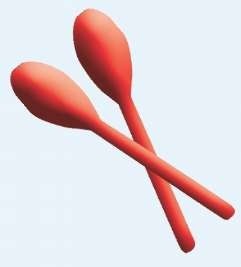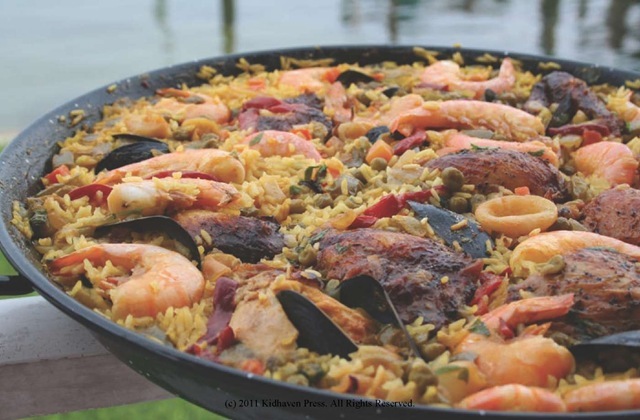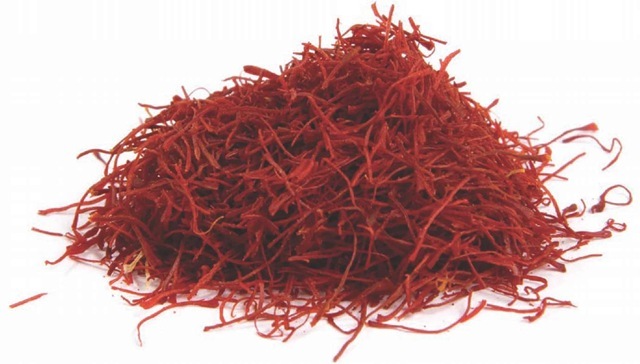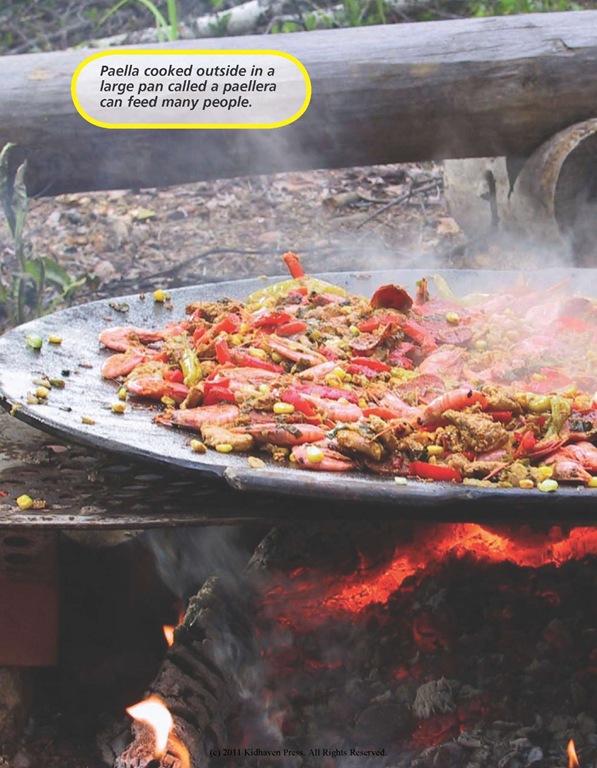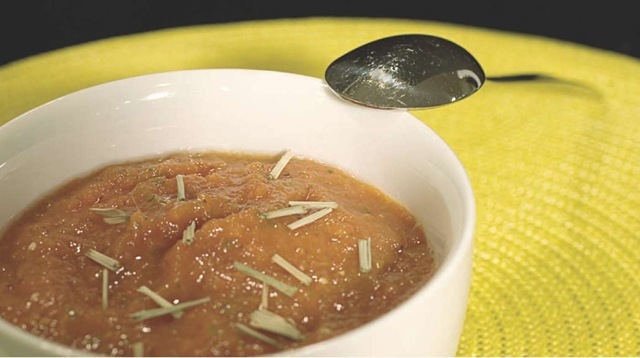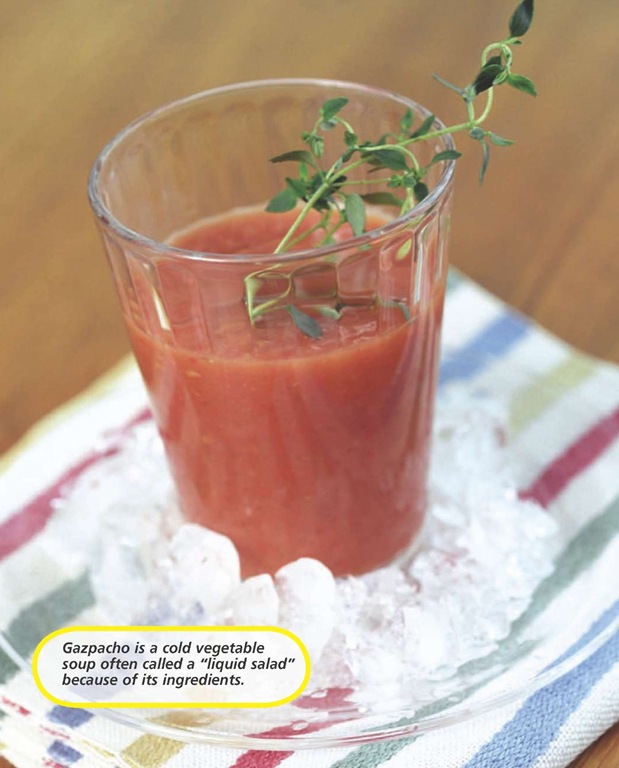Because Spaniards prefer eating fresh local food, Spain’s diverse geography and climate, which ranges from snow-capped mountains to hot sundrenched beaches, affects what people eat. For instance, thick stews and soups are popular in the mountains. Fish pies made with cold-water creatures like octopus and cod are favored along the Atlantic coast, while along the Mediterranean coast, shellfish stews rule.
Despite these regional differences, all Spanish cooking reflects the nation’s long colorful history. Favorite dishes such as paella (pah-el-yah), gazpacho (gahs-pah-cho), and tortilla espanola (tor-tee-ya es-pahn-yo-la) are good examples of this blending of history and location.
It Started with Rice
Paella is a rice dish that originated in Valencia, Spain, in the 19th century. But, if not for the ancient Romans and the Moors, this dish might never have been created.
The Moors were a group of Arabs who occupied Spain from the 8th to the 13th century. They were the first people to plant rice in Spain.
Spain’s climate is somewhat dry for rice cultivation. But, because the Romans introduced irrigation farming to Spain 200 years earlier, this was not a problem. The Moors used this farming method to channel water from the mountains to the rice fields. Rice has flourished in Spain ever since.
Spanish Restaurants
Spaniards love to eat out. Rather than hosting dinner parties in their homes, it is common for Spaniards to invite guests to a restaurant.
Spaniards have been dining out for centuries.
Many Spanish restaurants are more than 100 years old. In fact, the world’s oldest restaurant is located in Madrid, Spain’s capital. It was established in 1725.
Early Spanish restaurants began as taverns where travelers and local people came for a drink and a bite to eat. Many also provided rooms in which travelers could spend the night as well as stables for their horses.
Today, Spaniards eat about 50 pounds (22.7kg) of rice per person, per year. A large part of this is used in paella. Paella is a kind of stew that features a wide range of ingredients such as seafood, fish, pork, sausage, chicken, or rabbit. These may or may not be mixed with each other. There are seemingly limitless variations of the dish. "Put two Spanish cooks together and you’ll likely get three paellas,"6 say authors Richard Sterling and Allison Jones. But no matter the other ingredients, paella always contains rice, olive oil, sofrito, and saffron. The last is a costly spice that the Moors brought to Spain. Its bright yellow color brightens paella, and its tealike flavor adds a savory taste to the dish.
There are many variations of paella, but they always contains rice and saffron.
Saffron adds color and flavor to paella.
A Special Pan
Seafood paella is one of the most popular varieties. To make it, a mix of different seafood and fish are stir-fried in olive oil in a large round shallow pan, known as a paellera (pah-el-yare-ra). It has a handle on each side and a flat bottom, which helps distribute heat evenly.
Tomatoes, garlic, and onions, the ingredients that compose sofrito, come next, followed by the rice, which is seasoned with saffron. The whole thing is coated with more olive oil, and water or broth is added. As the paella cooks, the liquid is absorbed and the rice drinks in the flavors of the other ingredients.
The paella is done when a golden crust known as the soccarrat (so-cah-raht) forms on the bottom of the rice, while the rest of the rice is dry, plump, and slightly crunchy. Paella is usually served and eaten right out of the pan. Diners divide the paella up into sections and eat the delicious treat with special triangular spoons that are used only for this purpose.
The Paella Maestro
Although paella can be made on a stove, traditionally it is cooked outside over a wood fire made from orange-tree branches. This gives the dish a smoky taste and a citrusy fragrance. Because it is often cooked over an open fire, Spaniards say cooking paella is a man’s job. As a matter of fact, men known as paella maestros (pah-el-ya mah-es-tros) travel all over Spain cooking paella at festivals and other large gatherings.
Cocido
Cocido (coh-cee-doh), which means boiled in Spanish, is a popular Spanish stew. It is made with chicken, beef, pork, sausage, and garbanzo beans, which are slowly cooked over low heat. Historians say that the first cocido was made by Spanish Jews hundreds of years ago.
Because their religion prohibited them from working on the Sabbath, Jewish cooks prepared the stew before the Sabbath began and then left it to cook during the Sabbath.
Since Judaism also forbids eating pork, early cocido did not include it. In the 15th century, when Jews were forced to convert to Christianity or leave Spain, pork was added to the dish. By doing this, former Jews hoped to prove that they had truly given up their former religion.
Gazpacho is a hearty soup served cold and is especially delicious on a hot day.
Paella maestros typically use huge paelleras in which they can cook enough paella to serve hundreds of people. For instance, a 52-inch (130cm) paellera makes enough paella to serve 200 people. Indeed, the largest paella ever made fed 50,000 people.
Whether paella is made for one person or a thousand, its delicious taste, enticing aroma, and colorful appearance makes it one of Spain’s most popular and most famous foods. "Paella," explains an article in Art Culinare magazine, "transforms simple rice . . . into a complex and extraordinary meal."7
Liquid Salad
Gazpacho is another favorite dish that reflects Spain’s rich past. It is a cold vegetable soup often described as "liquid salad." Its primary ingredients, tomatoes and bell peppers, were never seen in Spain, or the rest of Europe, until the 15th century.
Gazpacho
Making gazpacho with a blender is not difficult. It is important to chill the soup before serving it to allow the flavors to develop.
Ingredients
3 soft ripe tomatoes, chopped
1 clove of garlic, peeled and minced
1/2 sweet bell pepper (red, yellow, or orange), stem and seeds removed, chopped
1/2 small cucumber, peeled and chopped
1/4 small red onion, chopped
3 cups tomato or vegetable juice
1 tablespoon extra-virgin olive oil
1 tablespoon red wine vinegar
1/2 cup croutons
Instructions
1. Put the vegetables and garlic in a blender and puree until no large pieces remain. You may have to do this a little at a time.
2. Add the juice, olive oil, and vinegar. Mix well with a spoon or in the blender.
3. Put gazpacho in a container and chill overnight.
4. Top with croutons before serving.
That was when Spanish explorers brought these vegetables, which are native to the Americas, to Spain. Before this time, gazpacho was a plain-tasting soup that consisted of stale bread, olive oil, garlic, and vinegar. Once tomatoes and bell peppers were added, gazpacho became the zesty red soup that Spaniards love.
In the past, making gazpacho was hard work. Cooks made a thick paste by pounding moist bread, garlic, onions, bell peppers, fresh vine-ripened tomatoes, vinegar, and olive oil with a pestle. To eliminate big pieces, the mixture was then pushed through a sieve.
Most modern cooks create smooth creamy gazpa-cho with a blender. Sometimes ground almonds, which were brought to Spain by the Moors, are added to the mixture to sweeten and thicken it. Or they are used in place of tomatoes to make white gazpacho. Green fava beans and lettuce are other possible ingredients.
Once the gazpacho is made, it is placed in the refrigerator to chill overnight. The next day the soup is usually placed on the table in a colorful pitcher. Small bowls filled with toppings such as sliced cucumbers, croutons, diced onions, and slices of hard-boiled egg and ham accompany it. To make the whole process even simpler, Spanish supermarkets sell containers of gazpacho, just the way orange juice is sold in North America.
Spaniards eat gazpacho year-round, although it is especially popular in hot weather. Its refreshing taste quenches the thirst and energizes the body.
Tortilla espanola is a versatile dish that’s easy to make. It can be eaten hot or cold, anytime, anywhere. And most people love it!
"There is absolutely nothing like it in the hot summer months, although it seems to be just as popular when the weather turns cold,"8 says Penelope Casas.
A Delicious Omelet
Tortilla espanola is also popular year-round. This potato omelet, which is often called the national dish of Spain, has its roots in Spain’s past. Although modern Spaniards love potatoes, the vegetables are not native to Europe. They were brought to Spain from Peru in 1537 by Spanish explorers. The Spanish people fell in love with potatoes, and it was not long before tortilla espanola was created.
Tortilla Espanola
Making tortilla espanola is not difficult, but flipping the omelet can be tricky.
Ingredients
4 small potatoes, peeled and sliced into thin rounds
4 eggs, beaten
1 small onion, cut into small pieces
1/4 cup plus 2 tablespoons olive oil pinch of salt and pepper
Instructions
1. Heat 1/4 cup olive oil in an 8-10 inch frying pan.
2. Put the potatoes, onions, salt, and pepper in the pan and cook over medium-to-low heat until the potatoes are soft but not brown. Stir to prevent them from sticking.
3. Drain the potato mixture. Pour the eggs over the potatoes. Let it stand for 5 minutes.
4. Wipe out the frying pan. Heat the 2 tablespoons of olive oil. Add the egg-potato mixture. Cook on medium-to-low heat until the bottom is set and golden brown. While cooking, shake the pan so that the mixture does not stick.
5. Flip the tortilla by putting a plate that is larger than the pan over the pan and turning the pan over. If any parts of the tortilla stick to the skillet, remove and flip them with a spatula. Slide the tortilla back into the pan, add any parts that were flipped with the spatula, and cook another 3 minutes.
Tortilla espanola is a flat cakelike omelet. Indeed, in Spain the word tortilla refers to an omelet rather than a flat bread as it does in Mexico. To make the delicious dish, chefs slowly cook a layer of potatoes in fragrant olive oil with onions and garlic. When the potatoes are golden, the ingredients are removed from the pan and added to beaten eggs. The mixture is cooked in a skillet until the bottom is lightly browned, then it is flipped and cooked some more. The end result is fluffy, crisp, light, and filling.
Sliced in wedges like a pizza, tortilla espanola is eaten hot or cold, for breakfast and supper. Spanish schoolchildren carry it for snacks in their lunch boxes. And Spanish picnics would not be the same without it. But no matter when it is eaten, tortilla espanola is, according to Marita, a Spanish woman who loves to cook, "the jewel of the Spanish kitchen."9
Tortilla espanola, paella, and gazpacho are all jewels of Spanish cooking. Not only do they taste delicious, but they also remind the Spanish people of their long and rich history.
